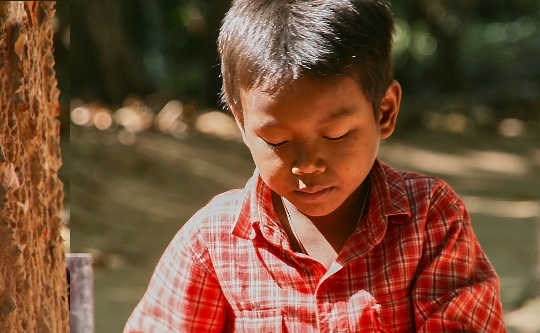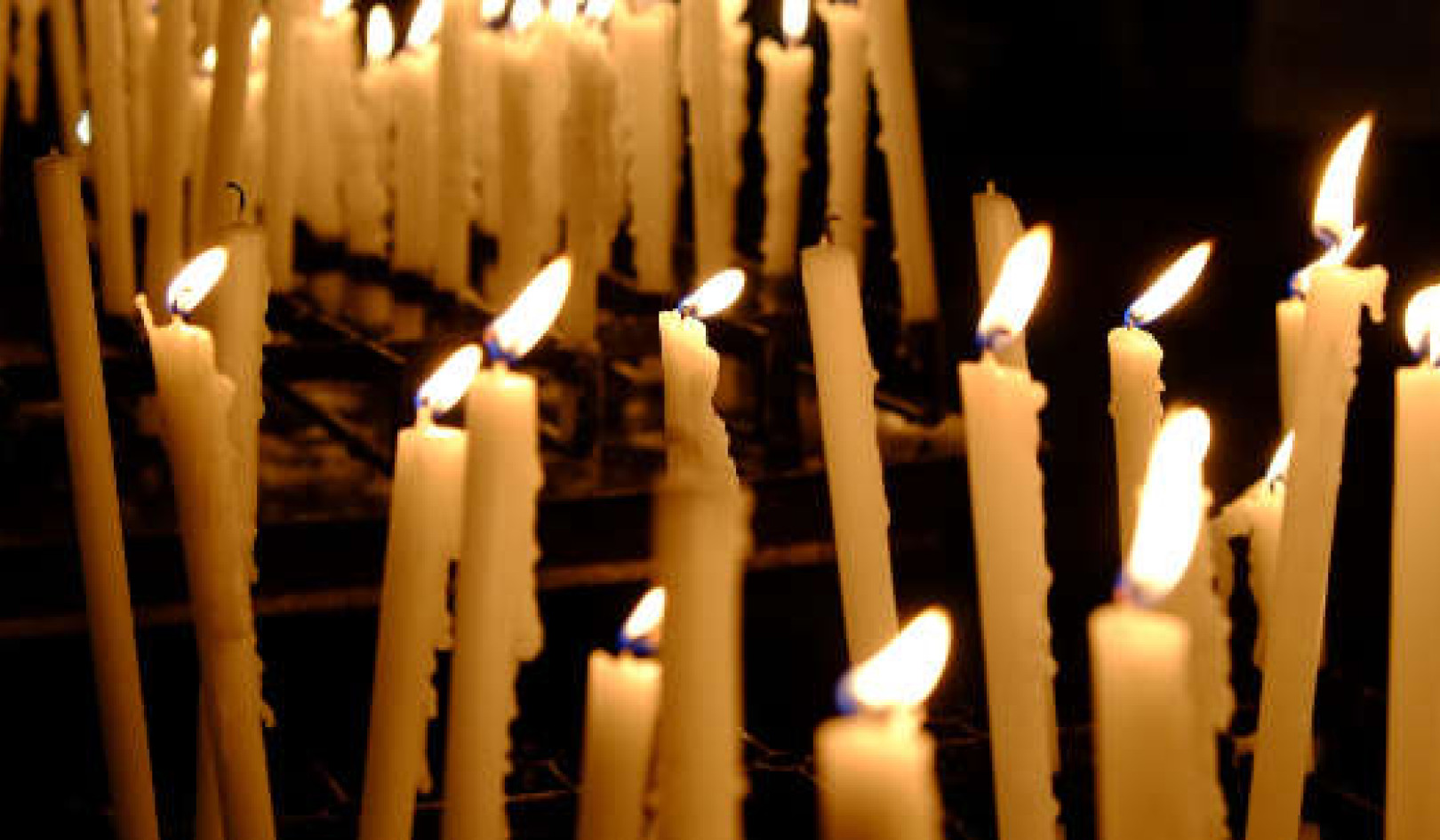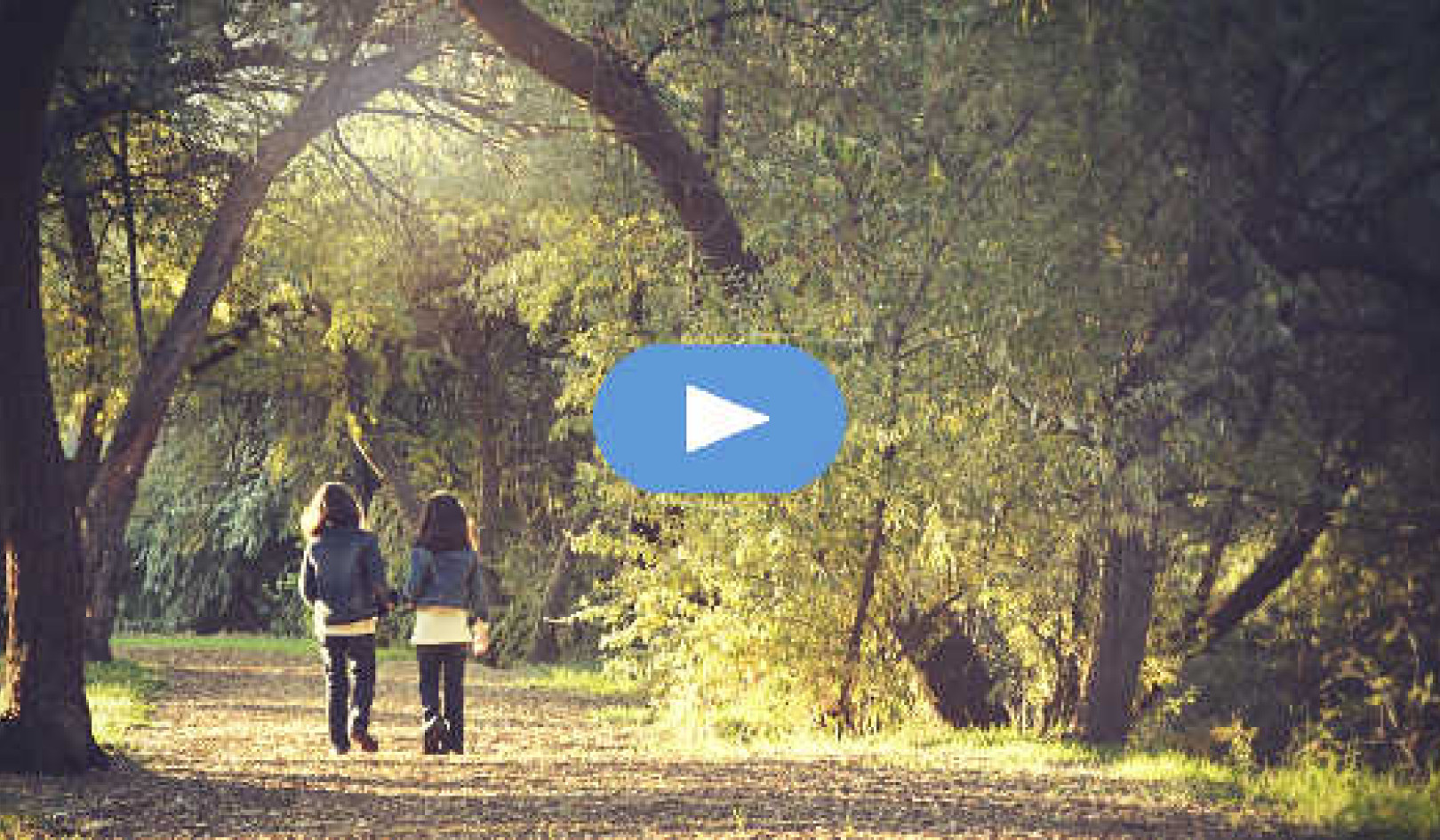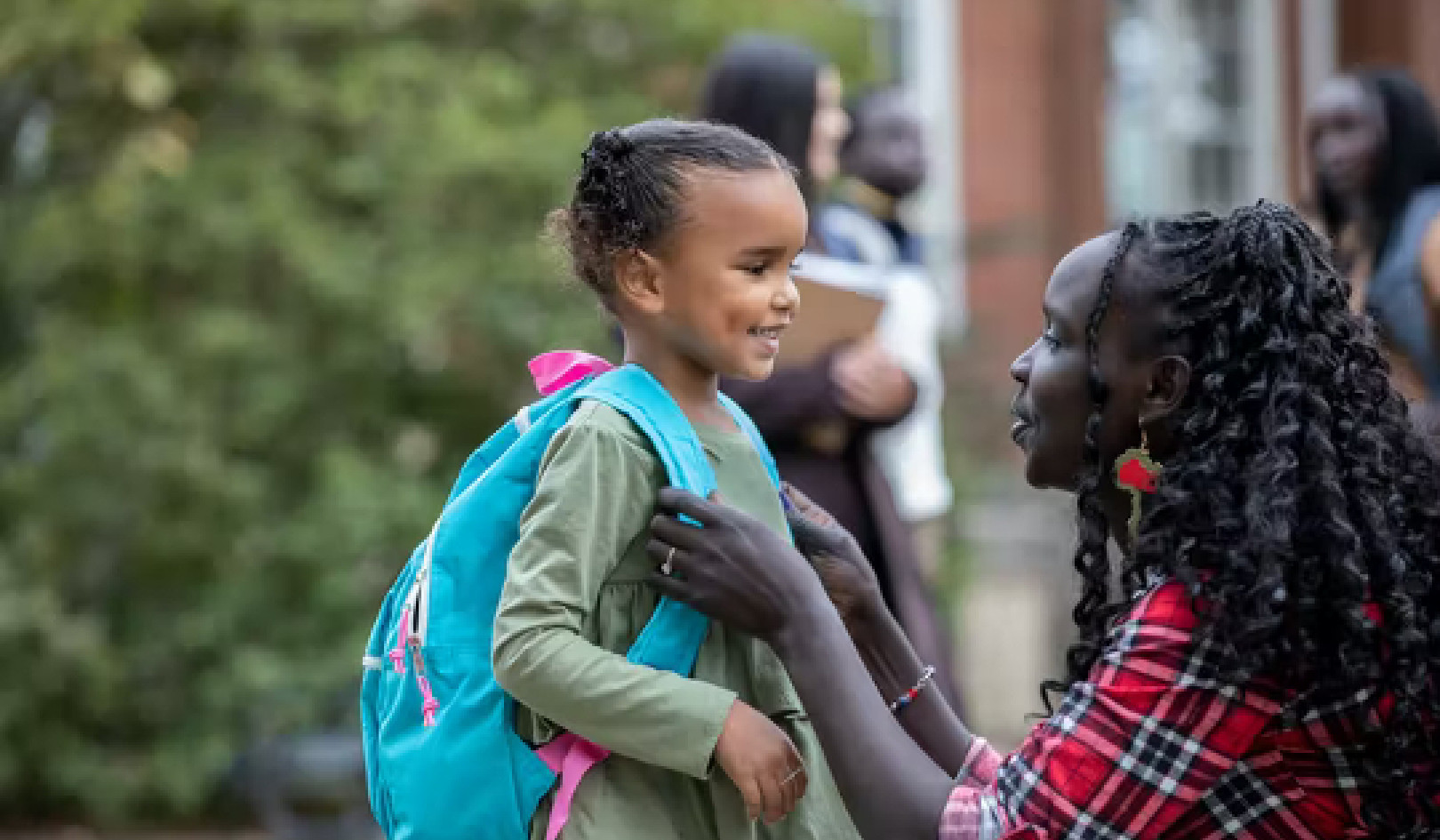
Image by Daniel Kirsch
In his book A New Earth, Eckhart Tolle describes our ego as an “illusory sense of self” based on unconscious identification with our memories and thoughts. This identification creates what Tolle calls our pain-body, an accumulation of old emotional pain. In The Four Agreements, don Miguel calls the Little Soul a parasite, because for most adults, our ego-personality has split from our Big Soul and now feeds on the energy of fear.
Tolle and don Miguel are using different words, but they are describing the same concept: the separation of our Little Soul from our Big Soul.
I see the Little Soul as a small child. When a child is intimately connected to a loving, wise, nurturing caretaker (Big Soul), it is fun to go out and explore the world and then come back and share what it has learned. If a child discovers something scary or confusing during her explorations and then comes back to check in with her older and wiser best friend, Big Soul reminds her of the big picture by showing her that she is part of something vast and wonderful.
Once reassured, the child smiles and goes off to play again, realizing that she is engaging in a fabulous dream that she is cocreating. The child thus gains experiences and matures from a base of unconditional love and security. This is, of course, the ideal situation, but many of us do not even know that this is possible.
Think You've Lost Your Way Back to Big Soul?
Now imagine what would happen if that child went out to play and lost her way back to Big Soul, her best friend and wise guide. Can you imagine yourself as a little kid lost in a busy outdoor marketplace? How would you feel? What would you do?
Take a moment to imagine that sense of being lost and of believing that you have to figure out how to stay safe in a seemingly unfriendly, unfamiliar world.
It is in this moment of losing our connection to our Big Soul that the fear-based I of our Little Soul is born. I am separate, I am alone, I don’t know where I am, I don’t know how to be.
As your lost and disconnected Little Soul starts looking for its true source of comfort, Big Soul, it comes across other sources that inadequately mimic how it feels to be in Big Soul’s presence. What it finds instead is a bewildering number of rules about how it is supposed to behave and who it is supposed to be to receive that comfort.
Grasping for Stability in a Confusing World
Without your Big Soul’s big-picture guidance, your Little Soul starts soaking up new concepts and beliefs that are not highest truth but only appear to be truth. Little Soul is then introduced to the concept of punishment and reward and begins to fear the pain of love being withheld. As a result, Little Soul concludes that it is not enough and believes that the only safety is in fitting in, or that the only safety is to rebel and not fit in. In either case, your Little Soul grasps for an identity to give it a sense of stability in a very confusing world.
Your Little Soul spends years carefully constructing who it believes it is supposed to be to be loved and accepted. Each time it believes a thought about how it is supposed to be, such as I should be happy all the time, or If I’m happy, people will be jealous of me, or If I were good enough, I’d make lots of money, or My friends won’t approve of me if I let them know I love baseball, your Little Soul erects tiny walls that further separate it from its connection to its own Big Soul truth.
Remember, Big Soul hasn’t gone anywhere. Rather, your Little Soul believes it is lost and alone and can’t find its way back to its source. There are always glimmers of Big Soul peeking through, showing the way home. But your Little Soul is so distracted by thinking about how to be that these glimpses of simply being are quickly covered over by stories.
The Little Soul’s Fear
Here is a specific look at how our Little Soul loses its way, taken from my book A Little Book on Big Freedom:
I am three years old, playing with my rambunctious eight-year- old sister. We’re laughing and gleefully running around the house, arms waving, feet barely touching the ground.
Suddenly, I hear a loud noise behind me, and I turn to see that my sister has accidentally knocked over a vase, which has shattered all over the floor. We freeze and look at each other, wondering what to do next. My sister shakes her head and says, “We’d better clean this up before Mom comes back inside.” But when we go into the kitchen to get the broom, we decide to have a snack first. Before long, the two of us are laughing and playing again, forgetting all about the vase.
Meanwhile, our mom has been outside working in the garden. She is hot, tired, and still upset over an argument she had with Dad earlier in the day. She’s thinking about every thing she needs to get done, and trying to fortify herself to push through her current state of physical and emotional overwhelm.
Mom’s not-good day is about to get worse.
As she walks into the house, she hears my sister and me laughing and running around. Then she sees her grandmother’s vase—the only thing her grand mother had ever given her— shattered on the floor.
Even though she has rarely yelled or gotten upset with us, today she just loses it. She starts yelling, “Who broke my vase?! Who broke my vase?!”
My sister and I come running into the front room, both scared as she shouts at us about the vase, demanding to know who broke it.
In a panic, my sister points at me and says, “She did it!”
I look at her, and then at my mother, stuttering, “I . . . I . . . I didn’t—”
“You! Go to your room now!” Mom yells.
Now close your eyes for a moment and imagine that you are a child and that you have just been punished for something you didn’t do. How does this feel in your body? What thoughts are beginning to cycle through your mind?
You may have a strong emotional reaction, a tingling that fills you from head to toe. Physically, you may feel a churning in your stomach, a tightness in your throat, or a tearing feeling in your chest. You may be angry and feel betrayed. You may feel scared or confused.
The emotion itself is not the problem, but what we do next creates the fodder for most of our ongoing suffering as adults.
We tell ourselves a story.
As a little kid, consider some of the things you may tell yourself to help make sense of what just happened:
Mom loves my sister more than she loves me.
People will lie or betray me to serve their own interest.
If I lie, I won’t get punished.
It’s not safe to play or feel joy; I’ll get in trouble.
I can’t trust Mom.
I have to be extra careful and earn the feeling of love and safety.
I’m bad, clumsy, and stupid.
Material objects are more important than people.
Life’s not fair.
Any one of these thoughts could be nothing—like a dandelion puff blowing in the wind and not taking root. Or the puff could land on fertile soil and start growing roots and shooting out leaves. Before you know it, a whole field of weeds has sprouted.
Seeds of Doubt, Confusion, and Misunderstanding
These tiny thoughts have immense power— not their own power but the power we give to them. We are incredible creators, but what we often create is based on the seeds of false thoughts that, when planted, take root and blossom into agreements that we make with ourselves and with others.
While the situation with the vase is a relatively minor trauma, the point is to see how a brief incident can plant seeds of doubt, confusion, and misunderstanding, which can then grow into larger agreements that affect our entire lives until we investigate and uproot them.
The child in this scenario may not even remember the incident when she grows up, but you can see the impact it could have on her thinking—especially if things like this occur on a regular basis. On an unconscious level, she will literally create a reality that will grow from this handful of childhood agreements. These beliefs will become a shaky floor for all her future actions.
Take a moment to reflect on your own experiences:
Where have you erected jail-like walls based on past stories?
What are the stories you tell yourself that make you feel helpless or victimized instead of powerful and confident?
In what ways do they limit how you perceive your life story, your talents, and your possibilities for the future?
For many of us, there are more than a few of these in a variety of areas. Sometimes we have told ourselves these stories for so long that we no longer recognize them as stories. We mistake them for “the way things are.” Unearthing these beliefs can take time and energy, but we must reveal and expunge them if we are going to be free.
The good news is that you do not need to know the origin of these beliefs to correct and replace them; all you need to do is (1) be honest with yourself about the current state of your internal house; and (2) be willing to do the work to remodel it from the ground up.
We are incredible creators, but what we often create is based on a foundation of false thoughts from which we then build an entire, limiting structure of agreements. As don Miguel writes in The Four Agreements Companion Book, “Imagine every agreement is like a brick. Humans create an entire structure out of bricks, and we glue it together with our faith. We believe without doubt in all the knowledge within the structure. Our faith gets trapped inside that structure because we put our faith in each agreement. It’s not important if it is or isn’t true; we believe it, and for us it is true.”
Your Current Reality
How have you created your current reality based on old stories or agreements you made with yourself, about what you were told as a child? And why are these false stories so alluring that you could forget the warmth of your Big Soul? Let’s take a look.
As children, each of us took on beliefs or agreements that moved us further away from our Big Soul. Many of these agreements, which are designed to give us a sense of safety when we feel lost and confused, were passed on energetically from our parents and other caretakers. Some we mimicked from what we saw around us, and others we made up all on our own, like believing Mom loves my sister more in the scenario illustrated above.
However, the stories we created as a child were highly influenced not only by the agreements of the people around us but also by what the Toltecs call the dream of the planet—humanity’s collective perspective. As don Miguel and his son don Jose describe in The Fifth Agreement: “The shared dream of humanity, the dream of the planet, was there before you were born, and this is how you learned to create your own art, the story of you.”
You can easily see the invisible but pervasive influence of the dream of the planet by turning on the nightly news, reading the headlines of major newspapers, watching soap operas, or looking at advertisements. Most media report fear and scarcity; advertising is geared to how perfect you would be if you used their product, not how perfect you are now. . . .
The information on how to think and how to act and how to be is not created by the media—it is merely a reflection of the agreements we’ve made. The content of our media shows us that most of us are experiencing reality through the eyes of conflict, fear, scarcity, and a sense of not being good enough. These limiting qualities are what hook our attention because they feel familiar to us, and in that familiarity, we find a (false) sense of safety.
Since almost every one—from our parents to our teachers to our friends—is immersed in this way of perceiving the world, it seems natural for us to believe that we are not lovable or that we have to be a certain way to be accepted. But this is not our natural state, and that’s why it feels so uncomfortable to us! That’s why we are always looking for comort and for something to complete us. That’s why we are seeking the path home.
©2020 by HeatherAsh Amara. All Rights Reserved.
Excerpted with permission from: The Warrior Heart Practice.
Publisher: St Martin's Essential, www.stmartins.com.
Article Source
Warrior Heart Practice
by HeatherAsh Amara
 A revolutionary process based on the four chambers of the heart and rooted in Toltec wisdom that brings emotional clarity, healing, and freedom. The Warrior Heart Practice is a powerful new method to reconnect with our sense of authenticity and inner-knowing and realign with our true nature. Author of the bestselling book Warrior Goddess Training, HeatherAsh Amara has trained extensively in the Toltec tradition under the tutelage of don Miguel Ruiz, author of The Four Agreements. (Also available as a Kindle edition, an Audiobook, and an Audio CD.)
A revolutionary process based on the four chambers of the heart and rooted in Toltec wisdom that brings emotional clarity, healing, and freedom. The Warrior Heart Practice is a powerful new method to reconnect with our sense of authenticity and inner-knowing and realign with our true nature. Author of the bestselling book Warrior Goddess Training, HeatherAsh Amara has trained extensively in the Toltec tradition under the tutelage of don Miguel Ruiz, author of The Four Agreements. (Also available as a Kindle edition, an Audiobook, and an Audio CD.)
For more info and/or to order this book, click here.
About the Author
 HeatherAsh Amara is the author of a number of books including the 'Warrior Goddess Training' series. She brings an openhearted, inclusive worldview to her writings and teachings, which are a rich blend of Toltec wisdom, European shamanism, Buddhism, and Native American ceremony. She travels and teaches throughout the United States as well as internationally. Visit her website to learn more at HeatherashAmara.com
HeatherAsh Amara is the author of a number of books including the 'Warrior Goddess Training' series. She brings an openhearted, inclusive worldview to her writings and teachings, which are a rich blend of Toltec wisdom, European shamanism, Buddhism, and Native American ceremony. She travels and teaches throughout the United States as well as internationally. Visit her website to learn more at HeatherashAmara.com




























